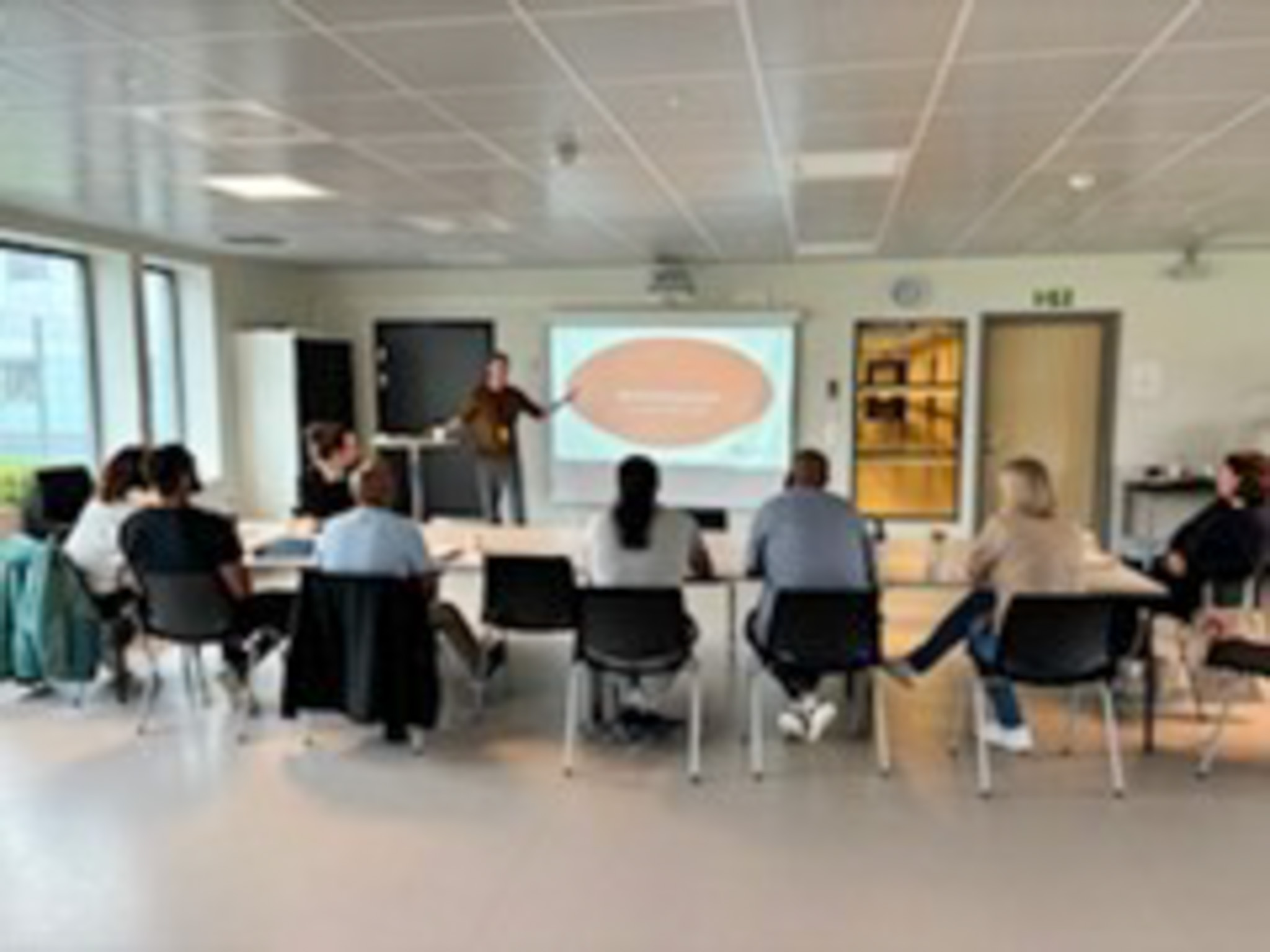That’s what we aim to find out in the pilot project we recently started in collaboration with Romerike Prison, Ullersmo unit. In spring 2024, five inmates completed an 8-week introductory course. The course was developed by prison officer and program coordinator at Ullersmo, Elise, and Nina from “NAV in prison”. The idea emerged during the 2022 World Overdose Day, and many hours have since been spent organizing it, with support from KBT Vocational College.
Now, six inmates have begun studying to become peer support workers. It requires many adjustments, but if successful, this could be the start of something bigger.
Time management and unpredictability
Like many other projects, it takes some dedicated individuals to make this pilot a reality. There is no doubt that both Elise, Nina, and their colleagues are exactly that. Management is also on board. When some of the KBT staff went to Ullersmo to start up the semester, an inspector told us: “It’s fantastic that we are making this happen!” We completely agree!
Many potential challenges will need to be overcome in the coming year, and solutions need to be found quickly. Organizing the teaching schedule is a bit of a puzzle. Someone serving time in a high-security prison has less control over their daily schedule than most of us take for granted. They can’t decide when to receive visitors or go shopping, let alone use the internet. Many also have other scheduled activities throughout the week, from work to substance abuse treatment, or other learning activities.
Bringing digital education into a high-security setting
Much of the peer support worker education is conducted digitally, and it’s not just the students’ limited internet access that requires the program to be adapted for a high-security prison. Strict rules apply to what can be brought past the security check. For example, a PC or smartphone cannot be brought in when a teacher from KBT Vocational College visits. Presentations must be sent in advance, and printed copies of information are often used instead.
Throughout the academic year, students will also receive several guidance sessions, which are usually done digitally. In this case, we will compensate by traveling to provide in-person guidance.
Theory and practice
As a vocational program, the peer support worker education includes 50% practice. Normally, students find a placement near where they live. A practice period consists of 270 hours. In the prison, they need to think differently about what kind of work can count as practice, such as giving presentations.
Awareness of possible pitfalls and role conflicts
One major difference between students in prison and those on the outside is that they cannot leave their environment after work or school. They remain in the same setting 24/7, making it challenging to separate their different roles. Although they will not have practice in their own department, most people around them know that they are studying.
On the first day of class, both students and staff showed awareness of these issues, which is a good start. One student reflected aloud on the potential to end up in a position of power over other inmates, which they need to be mindful of.
Peer support workers in the correctional system
While peer support workers in mental health and substance abuse are becoming more well-known and widespread in Norway, it is still in the early stages within the correctional system. However, it is more established in other countries, such as the UK. Recently vi visited St. Giles trust in Wales, and learned a bit of how they work with prisons. We will write more about that soon!
Mutual desire to establish an educational program in prison
At KBT Vocational College, we have long recognized the potential for peer support workers in the correctional system, inspired by other countries. When Romerike Prison contacted us, it was a perfect fit. After discussing various educational setups, we have now launched a pilot project. Although we have planned for many things, unexpected events may arise over the next year.
We look forward to the collaboration in the coming year. If the pilot project is successful, it may eventually lead to the development of a program for more prisons in Norway.
This article was translated from Norwegian with an AI-tool.

